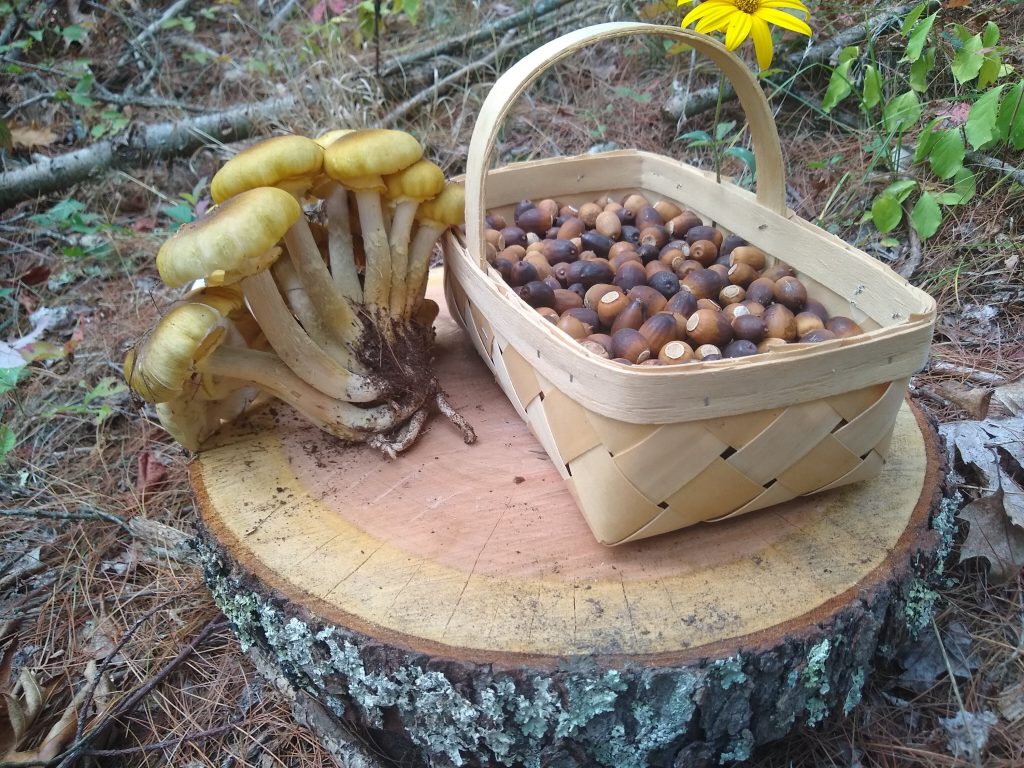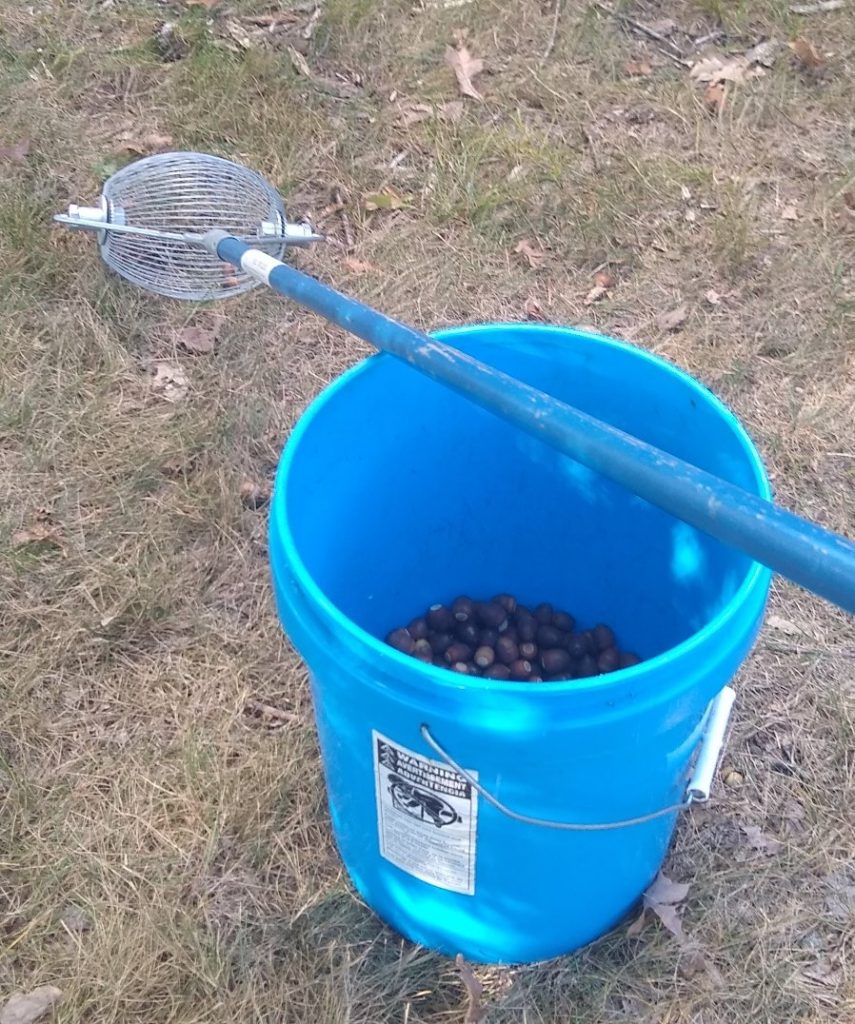Leftists will often stress that the existence of hunger and starvation isn’t a simple matter of resources not being available, but rather of uneven and unjust distribution. More than enough food is grown for everyone in the world, and that’s typically only counting the output of mass, conventional agriculture.
The fact that acorns are edible, and have even been used as a staple food in many parts of the world, makes this fact even more striking. There’s no reason beyond social control, profit for capitalists, and the creation of artificial scarcity for us to not make widespread use of acorns as food and livestock feed.

Acorns provide a lot of calories, which that alone makes them a valuable food. If we are to compare them to staple grains, they outperform not only in regards to calories, but also in where those calories come from; they contain more fat and protein than just about any grain. Likewise, they contain many more nutrients, particularly minerals such as potassium, magnesium, and manganese.
Unfortunately, most acorns are not edible as soon as they fall off the tree. Acorns contain a fair amount of tannins, a preservative compound that gives the acorn a bitter taste and, if eaten in significant quantities, causes damage to your kidneys. As a rule the acorns from red oaks have more tannins and also more fat, whereas white oaks produce less tannin-y acorns.
Fortunately, to make them edible is relatively simple, if sometimes time consuming. Tannins are water soluble and can be leached out in water. Traditionally this involved putting the nutmeat, possibly ground into a coarse meal, into a basket or cloth bag and leaving them in running water for a period of days or even a week. The amount of time is dependent on the particular species.

While relatively simple, turning acorns into food can be time consuming. Cracking hundreds or even thousands of nuts is beyond tedious. For that reason we’ve invested in the nut cracker pictured above, which can crack many gallons of nuts in a fraction of the time pounding them by hand would.
Harvesting is simple enough, since they fall from the trees more or less when ready. It’s not hard and even sometimes fun to squat on the ground picking them up, moving to new spots, looking much like you’re a squirrel. But to save time and enable people with limited mobility, I recommend two things to speed up the harvest time.
The first is a simple tool used for collecting nuts that’s basically a wire ball on a broomstick that lets small objects slip between the wires and into the ball when you roll it over an area. These are sold by different companies under names like Nut Wizard and Nut Weasel. It seems that far more people are accustomed to seeing these used to pick up brass at the range than on the nuts they were design for. We have the Nut Wizard from Lehman’s and have absolutely no complaints.

Another method (that we haven’t tried yet) is to string up a tarp between four poles with a little slack, and cut a hole in the center. That way you can position the whole setup (or two or three of them. underneath a particularly productive tree and have the nuts be funneled right into your bucket.
We’ve found that drying them thoroughly makes cracking much, MUCH easier. In most cases, a thoroughly dried acorn will separate easily from the shell when cracked. This drying process also accomplishes a first step that many foragers do, which is roasting them at least a little in order to kill any big eggs. If left unroasted in a relatively warm place, it’s fairly common for a lot of small moth larvae to make their way out of a number of your acorns. Roasting them kills those eggs and keeps them from eating into the nut. We usually put them in the oven on the lowest temperature possible for several hours, but the best would be some sort of solar heated drying rack that lets you put the nuts in a single layer. We’ll have to work that out in the future.
Next comes cracking, hopefully after thorough drying. As mentioned above, it’s much easier. The Davebilt cracker pictured above saves a lot of time and we highly recommend it, but a normal handheld nutcracker works just fine.
If you have to separate the shells from the nuts by hand it’s easy, but time consuming. If you can manage to winnow most or all of them instead, you’ll save a lot of time. Winnowing is a process for separating the shells and “skins” from the nutmeat by using a large, wide, shallow basket or something like it and tossing the broken mix of shells and nuts into the air, using the wind to blow away the lighter shells. If you don’t have wind, a box fan works.
Additionally, if you’re processing large amounts in five gallon buckets like we do, shaking the dried and cracked acorns vigorously in the bucket helps to separate the nutmeats from the shells and bring the empty shells to the top, cutting down the separating time dramatically. With the red oak acorns and their more papery inner membrane, it even helps to winnow those out to a fair degree.
Once you have your nutmeats all separated, you can leach the tannins out. Grinding it into at least a coarse meal will help the tannins leach out faster, but if you’re using a basket or cloth bag in running water you may need to keep the pieces larger for the time being. Some people will boil tannins out and this works, but it creates a stiffer, less sticky meal.
Chances are that you’ll need to use multiple changes of water unless you’re leaching them in a moving body of water like a river, which isn’t an option for most of us. Adding some wood ash to the water can help leach tannins out faster; a lot of us have speculated that this technique is the precursor to using hardwood ash to nixtamalize maize. Once the water runs clear and the acorns no longer taste bitter, they’re ready.
There are a lot of things to do with acorns and acorn flour, and we’ve really only begun to experiment with them very much in the kitchen. Muffins and “johnny cakes” are always popular, and one friend made an acorn gingerbread that is still talked about. In a lot of cases, they can be subbed in where cornmeal or almond flour might be used. I’m still hoping to experiment with some acorn stuffing, hopefully paired with a fall hunted turkey.
If you like what I’m doing here and want to make sure I can keep doing it, please consider supporting these projects financially. It sucks, but until capitalism isn’t a thing there are bills to pay.
Support the cause at:
https://venmo.com/code?user_id=3307862990258176175




Lots of good information! Thank you!
I have a live oak in my yard, could I harvest acorns from this tree for use the same way?